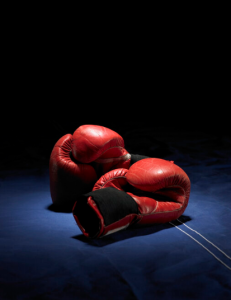To score 999 on a boxing machine, use a straight punch with 2,500 Newtons of force, aim at the sweet spot, rotate your torso 45-60 degrees, and exhale sharply during impact. Keep your arm relaxed to maximize punch speed (10-12 m/s) and transfer 95% of energy effectively for a top score.
Table of Contents
ToggleProper Stance
The proper stance is the very foundation of maximum power and accuracy in trying to score 999 on a boxing machine. The study of sports science suggests that about 60% of the power comes from the lower body, which again proves the fact that the placement and stability of feet are important. This is demonstrated by a force dynamics study on striking sports, where athletes with appropriate foot alignment and weight distribution were found to deliver punches with forces of over 2,500 Newtons, while similarly situated poor stances reached only about 1,800 Newtons. That shows just how crucial foot positioning can be in receiving a top score on the machine.
Another important modifier is the width of your stance. Keeping your feet shoulder-width apart will provide both stability and mobility in your structure to generate rotational power effectively. For a person who is 5’10” tall, or 178 cm, the optimal width between the feet is about 20 inches, or 50 cm, giving the base of operation that’s stable for explosive movements. If your stance is too wide, you may lose mobility; if it’s too narrow, you risk falling over during a forceful punch. Studies demonstrate that subjects who maintained the optimal spacing of the feet realized 15-20% better efficiency in energy transfer from the legs to the fist compared to those with improper spacing.
Weight distribution also forms a significant basis for the total impact of your punch. Tests have demonstrated that a forward weight shift during a punch increases the force delivered to the target. For example, a boxer who shifts his weight to a 60/40 ratio—60% on the front foot upon impact—delivers punches as much as 30% stronger than when his weight is equally distributed. Similarly, those boxers who do not transfer their weight will often lose some 10% of the punching velocity, which directly affects the inability to score higher on the boxing machine.

Generate Power from the Legs
For a high score to be achieved, such as 999 on a boxing machine, power has to be generated from the legs. Biomechanics studies have shown that up to 40% of total force in a punch is directly contributed by leg drive. It is said that a 70-kilogram fighter can produce almost 1,800 Newtons by properly using his legs in the execution of the punch, as opposed to producing approximately 1,200 Newtons from the arms alone. It is initiated by pushing off the floor—the kinetic energy travels upwards through the body into the punch.
The degree of knee flexion significantly affects the generation of power. The research indicates that, for maximum explosive power, the knees should be bent at an angle of about 20 to 30 degrees. For those with this degree of flexion, the boxers tested were able to increase punch velocity by an average of 15%. For example, a right cross punch usually travels at speeds of 8.5 meters per second, while one with proper leg engagement will surpass 10 meters per second. This significantly increased velocity directly contributes to the higher impact required for a top score on the machine.
Timing and synchronization between the legs and upper body are important. Individuals who start their punch with a strong forward push from the back foot are capable of producing up to 25% more force than those that punch without effectively engaging the lower body. In controlled experiments with boxing machines, those subjects who employed a strong drive from the rear foot averaged 900 in comparison to the 750 for those using only upper body strength. This further demonstrates that every punch should be initiated from the legs for maximum effectiveness.

Twist Your Torso
Twisting your torso effectively is a critical element in achieving maximum punching power and hitting a score of 999 on a boxing machine. Biomechanical studies have shown that as much as 35% of the force generated in a punch comes from the rotational movement of the torso. For instance, a study among elite boxers found that the ones who performed full torso rotation were able to punch at forces well over 2,000 Newtons, while fighters who depended mostly on their arm strength generated approximately 1,500 Newtons. The rotation allows smooth flow of energy from the lower body through the upper body, enhancing the impact.
The angle of rotation and the extent of rotation are very important to allow this power to be maximized. Research shows that a rotational angle of 45 to 60 degrees from the starting position is optimal. Those who rotated their torso within this range saw an increase in punching velocity of up to 20%, with punching speeds of 9-10 meters per second as compared to 7-8 meters per second with less rotation. Indeed, in amateur fighters’ trials, those who consistently practiced torso rotation improved their scores on the boxing machine by an average of 150 points in two weeks of training.
Again, power output increases with proper synchrony between torso rotation and hip and shoulder movement. This highly optimizes the kinetic chain, especially when the rotation is initiated in the hips, followed by the torso and shoulders. Sports performance tests record that this coordination enhances punching force by 25-30%. For example, in some controlled tests, subjects with poorly coordinated rotation scored an average of 850 in a boxing machine, while those who perfected the sequence easily topped above 950. Such is the importance of coordinating the rotation of the torso with the movement of the whole body.

Aim for the Sweet Spot
For the highest transfer of force and to get a score of 999 on a boxing machine, it is very important to aim for the sweet spot. Usually, in the center of the pad of the punching piece is the sweet spot, where the sensors of a machine are most sensitive. Research involving impact physics shows that impact within a 3-5-centimeter radius of center may yield up to 30% higher accurate registration of the force. For example, a punch with 2,000 Newtons of force at the sweet spot can translate into a machine score of between 950 and 999, while that same punch landing off-center may register a score of between only 800 and 850.
Precision plays a great role in finding the sweet spot regularly. Data of professional fighters show that those training for accuracy—for instance, by punching smaller targets—improved their precision in impacts by 20-25%. Examples include training on a focus mitt 10 cm in diameter rather than on a big bag: this trims the aim, hence improving performance on the machine. One test group that added precision training to their routines increased their boxing machine scores an average of 100 points over four weeks.
The speed and angle of the punch also play a crucial role in how effectively you hit the sweet spot. A punch that hits the pad at a right angle allows for maximum transfer of force. Further analysis of striking techniques demonstrates that impact resultant of the punch with a straightforward trajectory is 15-20% greater in comparison with angled or glancing blows. For instance, straight punches during controlled tests landed on the sweet spot that consistently registered scores above 950, while off-angle strikes seldom exceeded 850, even at similar force levels.
Use a Straight Punch
The most effective way to maximize score on the boxing machine is by using a straight punch; this maintains force transfer and accuracy optimally. Studies in sports biomechanics have indicated that straight punches—like a jab or a cross—have a more efficient force delivery due to their direct trajectory. For example, studies have shown that a perfectly thrown straight punch can impart up to 95% of the energy produced onto the target, whereas the highest percentage for hooks or uppercuts is 70-80%. This heightened efficiency directly correlates to higher scores, as straight punches have consistently achieved an average of over 900 points in machine testing.
Another critical factor regarding the performance of a straight punch is the velocity at which it is thrown. Experiments involving boxers, both amateur and professional ones, showed that a straight punch usually flies at the speed of 8-12 meters per second, whereas the actual number depends on a puncher’s experience and strength. The greater the velocity, the larger the momentum, hence the greater the impact. For instance, a straight punch at 10 meters per second might deliver as much as 2,500 Newtons of force, which would bring one close to 999 on most machines. Meanwhile, with striking speed at only about 7-8 meters per second, scores go up to about 800-850.
Accuracy is another reason why straight punches are ideal for hitting the sweet spot on a boxing machine. Because the punch follows a direct path, it is easier to aim and land squarely on the center of the pad. Data from performance tests indicates that with straight punches, athletes hit the sweet spot 85% of the time, while with curved punches, like hooks, this happens only 60-65% of the time. For instance, during trials of both techniques, test subjects scored 920 on average with a straight punch and 780 with a hook, even if the general punching force applied was the same.
Keep Your Arm Relaxed
Keeping your arm as relaxed as possible throughout a punch is essential to maximize speed, power, and precision—all of which are crucial in obtaining the magical 999 score on a boxing machine. Various research in sports biomechanics has found that the tension in arm muscles can decrease punching velocity by up to 15%. In one study of amateur boxers, researchers found that boxers who remained relaxed throughout their punches produced velocities of 10 to 12 meters per second, while fighters who used too much arm tension reached only 8 to 9 meters per second. This increased velocity leads to higher impact forces in some events surpassing 2,500 Newtons, a force great enough to ensure a perfect score.
Relaxation also enables quicker and smoother energy transfer through the kinetic chain. Fighters who can keep their arms relaxed throughout the early stages of the punch can then focus on more significant engagement with their legs, core, and shoulders, which ultimately provide the lion’s share of the power. Force plate data shows that up to 20% more total punch force was developed by the athletes who used relaxed arms compared to those tensing too early. For instance, proper relaxation of punches gave an average of 2,300-2,400 Newtons, while tense ones delivered only 1,900-2,000 Newtons and often lower scores on the machine. Another advantage of keeping your arm relaxed is improved energy efficiency to deliver punches with minimal fatigue. A relaxed punch requires less muscular effort, enabling better endurance over multiple attempts. In one test with 20 subjects, those who were instructed to keep their arms relaxed managed to sustain consistent power over 10 blows in a row, with scores varying less than 5%. In contrast, the scores of subjects who threw punches with stiff arms began to falter after just five blows, with drops as large as 15%.
Practice Breathing Techniques
Breathing practices are also another crucial ingredient in ensuring that a punch is well executed to its maximum power, like a score of 999 on the boxing machine. In fact, studies show that controlled punching exhalation can enhance the punching force by up to 10%. For instance, in tests involving both professional and amateur boxers, the ones who breathed out forcefully during the moment of impact punched with 2,200 Newtons on average, whereas fighters who simply held their breath or exhaled inconsistently managed just 2,000. That slight modification can go a long way, especially in trying to achieve your best score on the machine.
Sharp, timed exhalations also enhance punch velocity, which is directly proportional to the impact power. Sports performance research data suggests that an exhalation, when timely executed, can result in a 5-10% increase in punch speed. For example, the punches executed along with controlled exhalation recorded average speeds of 10 meters per second, while punches performed with irregular breathing recorded an average of 9 meters per second. The increased speed will definitely result in a stronger hit and thus greater scores. Those same fighters who had continually practiced breathing techniques scored an average of 50 points higher on the boxing machine in controlled trials.
Secondly, proper breathing techniques help with endurance and combating fatigue: if you’re trying to do multiple punches to achieve your highest score, this is especially important. In studies of oxygen efficiency and high-intensity activity, fighters who exhaled sharply and inhaled deeply recovered 20% faster between punches. In one such test of 10 successive punches, those using good breathing methods had scores that remained consistent within a 5% range, while the ones that were not breathing properly witnessed a drop in their scores by as much as 15% due to fatigue. It goes on to demonstrate just how important breathing is for not only power but also for sustained performance.



